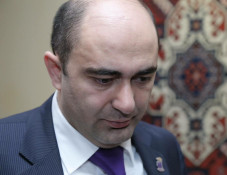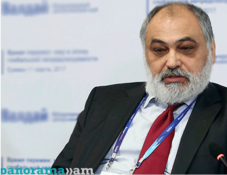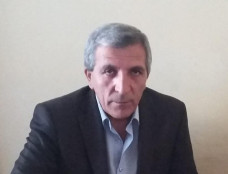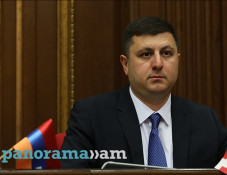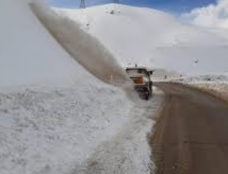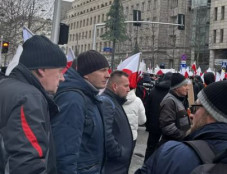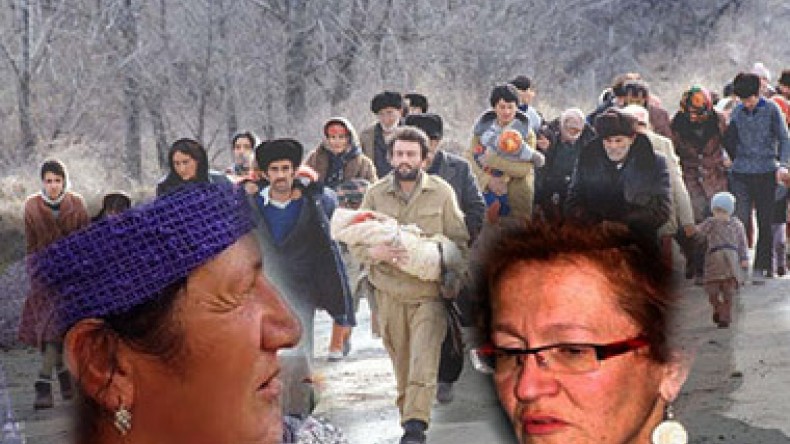
Russian journalist Ivleva doesn’t confirm Azerbaijani propaganda fabrications about refugee from Khojalu
The site Xocali.net http://xocali.net/ru/n22.html goes on revealing the falsifications of Azerbaijani propaganda over the events in Aghdam in 1992.
The story of Mehriban Bekirova, a Turk-Meskhet refugee from Fergana, has long been scrupulously studied thanks to the Russian journalist Victoria Ivleva’s reportage (http://xocali.net/ru/p11.html). However, 23 years later Bekirova has started to ‘remember’ strange details from the ‘captivity’.
The Azerbaijani site Vesti.az published ‘a story that Russian journalist Victoria Ivleva’s lens missed.’ It’s worth to note that the remark that Victoria Ivleva hadn’t seen that, was done in purpose as it’s obvious that she wouldn’t back such fabrications.
23 years later Bekirova started to claim that ‘she had been beaten,’ ‘they cut off with a bayonet a teenage girl’s breast which fell right onto her unhappy father’s face,’ ‘my [Bekirova’s] whole body got swollen,’ ‘Victoria frequently visited me and wondered how I was,’ ‘they cut a (pregnant woman’s) belly and put a kitten inside, and then stitched it up. <…> It was known later, and the newspapers wrote about it.’
According to Victoria Ivleva’s evidence, Bekirova and the rest of the Turk-Meskhets remained in the Armenian captivity for only 2 days. This means that the events described in the ‘story’ took place during in total of 48 hours.
Bekirova claims, “Viktoria frequently visited me and wondered how I was,” yet no one not a single time complained her of ‘tortures’, ‘harassment’, ‘beating’ and ‘cutting of parts of the body’.
According to Bekirova’s story, she “had seen everything with her own eyes”, ‘the tortures’ took place in the same room they were kept in; therefore she is supposed to have totally been covered with blood. Visiting that room, Ivleva has recorded neither any trace of blood, nor a grieving father whose daughter’s cut breast was thrown onto his face. Logically, that sort of horror couldn’t remain unnoticed by a professional journalist and photographer. Nonetheless, neither blood, nor grieving father, and nor a mention about the happening were captured by the journalist. Her shots show frozen, weary and upset people, but in no way tortured or harassed.
Given that the Azerbaijani side trusts Victoria Ivleva’s evidence having twice interviewed her and invited to Baku since 1992, then they will hardly suspect her in deliberately missing or not noticing ‘the horrors of the Armenian captivity’, suddenly revealed 23 years later. The fact is that Ivleva’s photos shot at different times during ‘the captivity’, don’t show any difference in neither Bekirova’s nor other people’s appearance; she doesn’t seem to be beaten or tortured.
Regarding the fetus cut off its mother’s womb, it’s a widespread and quite consistent myth of Azerbaijani propaganda, which was this time related by a ‘witness’. First, not a single Azerbaijani source which has published various, even suspicious lists of casualties, has contained a mention of a pregnant woman. In their stories the witnesses mention each other’s names, which the Armenian side, in its turn, compares with the names published by the Azerbaijani side. Usually those are already deceased people’s names; however, inconsistencies, misinterpretations or obvious falsifications are discovered here, too. Yet as soon as it comes to victims to inhuman tortures, deliberate murders or ‘oblations’, they turn into “anonymous young men”, “anonymous pregnant women”, “teenage girls” and their “unhappy fathers”. Second, as the “newspapers wrote about it”, we wonder in which newspaper it was published.
Moreover, the volunteer of the project Site Xocali.net got in touch with Victoria Ivleva and asked her, “Ms. Ivleva, do you confirm that information?” She responded amply and definitely, “Absolutely not, except for the fact that I have met unhappy Mehriban and that I have carried her baby, and then I gave her some small amount of money. I have already written to the author, but I guess it’s useless. Alas, for more than 20 years neither of your countries has made any, even a tiny step towards peace…” Citing Victoria Ivleva, whom the Azerbaijani side has no reason to distrust, would be just in place, “The guarding soldiers treated the Turk-Meskhets humanly.”
On February 26, 1992, during the war in Karabakh, around 200 to 300 people (according to Human Rights Watch, and 600 according to the version propagated by Azerbaijan) were killed in unknown circumstances near the city of Aghdam. They have been deliberately withheld by the Azerbaijani authorities in the midst of the military actions. Population of the village of Khojalu, which was one of the firing points shooting at the blockaded Stepanakert (among five others) was kept in the village for months by force and was not evacuated by the authorities of Azerbaijan deliberately, in order to use them as human shields later.
Residents of Khojalu coming out through the humanitarian corridor, that the self-defense forces of NKR had left open, freely passed more than 10 km and reached the Aghdam city controlled by the Azerbaijani troops. Later, not far from the positions of Azerbaijani troops dead bodies of the villagers were found. The exact death toll remains unknown as the official Baku publishes data contradicting each other. Parliamentary Commission investigating the tragic death of the civilians at Aghdam city was dissolved by the order of Heydar Aliyev, the investigative materials are kept secret.
Newsfeed
Videos








